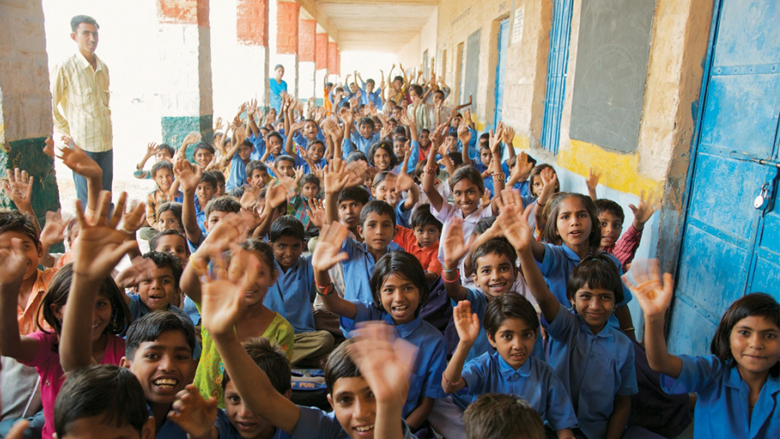Universalizing good quality basic education
Having improved access, India is now seeking to upgrade the quality of education provided and improve levels of learning. It is also seeking to bring the remaining 8 million or so out-of-school children into school. Most of these children belong to marginalized communities or live in far flung rural communities. The country is also seeking to ensure that all those enrolled are retained in school till they complete their elementary education (Grade 8).
Expanding secondary education and improving quality
Secondary Education, is critical to enhance India’s competitiveness in a rapidly globalizing world. But, for this, all India’s children will need to be equipped with at least ten years of schooling. This is the minimum level of education required to secure the jobs of the future, the jobs that will power India’s growth.
However, today, while more than 95 percent of India’s children attend primary school, less than half of 16 year olds - just 44 percent – complete Class 10. This is a huge loss for a nation that will soon have the largest and youngest workforce the world has ever seen.
The government is now seeking to bring 90 percent of the country’s 50 million secondary age children into school by 2017.
To achieve this goal, access, equity, management and quality will all need to be improved. Curriculum and teaching practices will need to be upgraded to impart more relevant skills, such as reasoning skills, problem solving, learning-to-learn, and critical and independent thinking.
Since this is an enormous task for the public sector alone, public-private partnerships will need to be expanded to tap into the potential offered by the 60 percent of secondary schools which are privately managed in India.
World Bank Support
Since 2000, the World Bank has committed over $2 billion to education in India. It has also provided technical support. Assistance includes:
Elementary/Primary education: Since 2003, the Bank has been working with Central and State governments, along with development partners (UK's DFID and the European Union) to support the Sarva Shiksha Abhiyan program.
In Phase 1 (2003-2007) the World Bank invested $ 500 million to expand facilities and improve infrastructure, get children to school, and set up a system to assess learning.
In Phase 2 (2007-2012) the World Bank provided a total of $1.35 billion to expand access to upper primary education, increase retention of all students until completion of elementary education (Grade 8), and improve learning levels.
In addition, World Bank evaluations and research provided pointers to further improvements. This included studies on financing elementary education, teacher absenteeism, instructional time and quality in primary education, and the impact of information sharing with village education committees. It also included studies on inclusive education for children with disabilities, comparisons between public and private schooling in UP, AP, and MP, and incentives to improve quality.
Secondary Education: The World Bank is supporting the Government of India’s centrally sponsored scheme for secondary education, Rashtriya Madhyamik Shiksha Abhiyan (RMSA), with an estimated $ 500 million. This is largely based on the analytical work on secondary education, published in 2009, which focused on strategies to improve access, equity, management and quality. In addition, the World Bank has conducted research into the feasibility for expanded public private partnerships at the secondary level, and has supported learning workshops on the role of information and communication technologies at the secondary level.
Support to States: The World Bank is also supporting state governments. For example, in Bihar, the Bank is providing about $250m to develop a comprehensive and effective teacher development and management system to improve the quality of education in elementary schools. It is using innovative approaches, such as technology-driven and distance learning models so teachers can continue to be their students even while upgrading their skills and knowledge.
